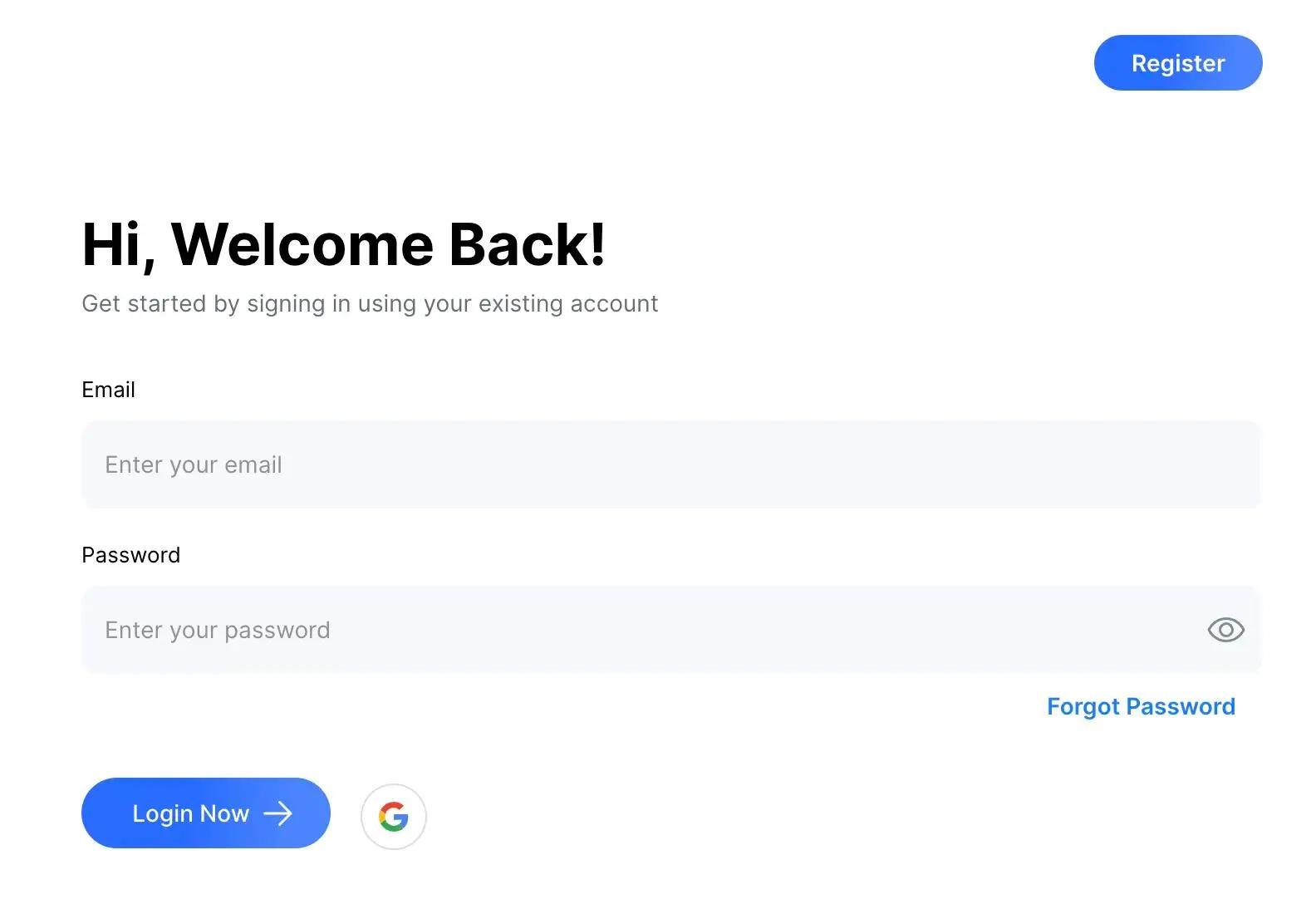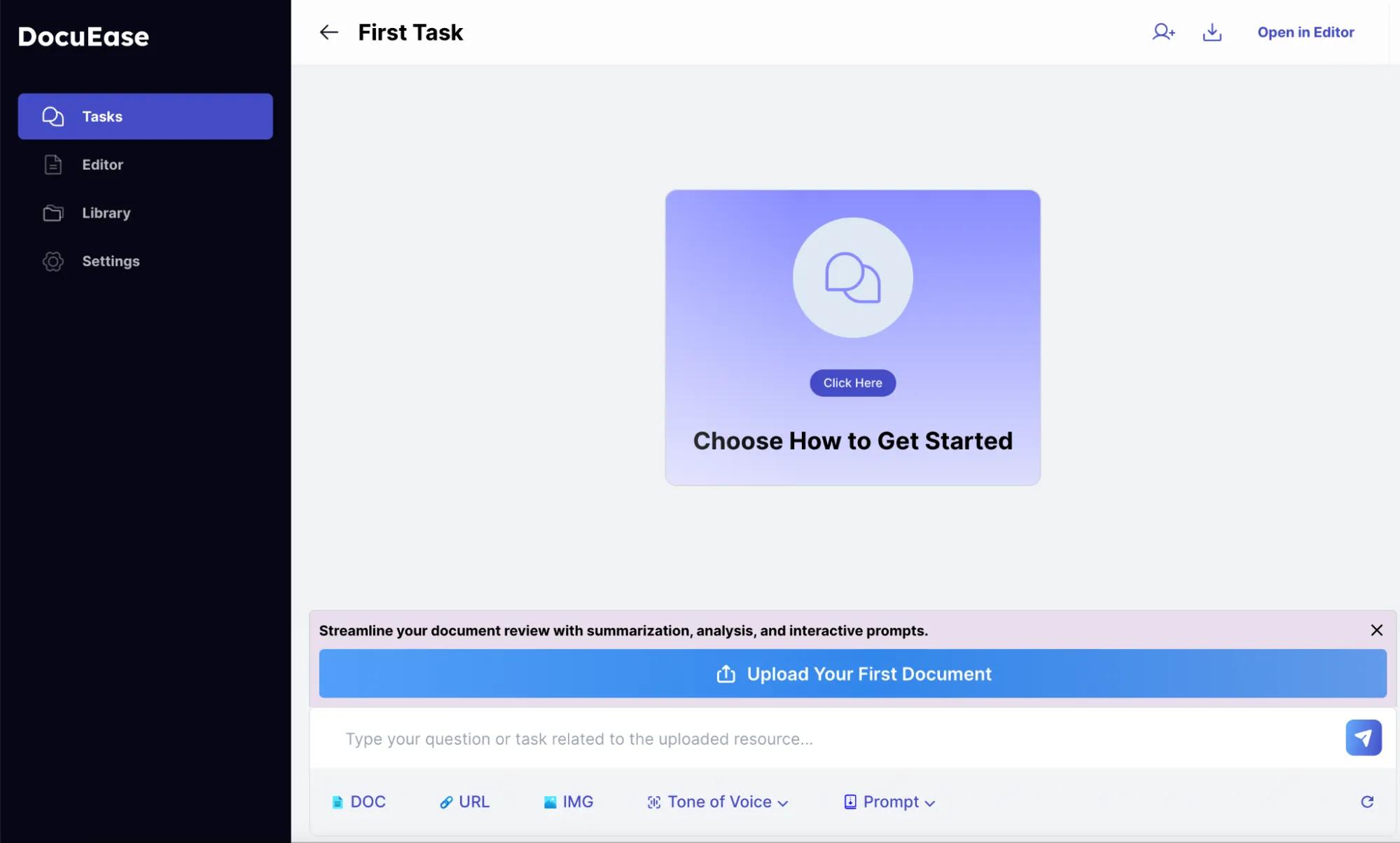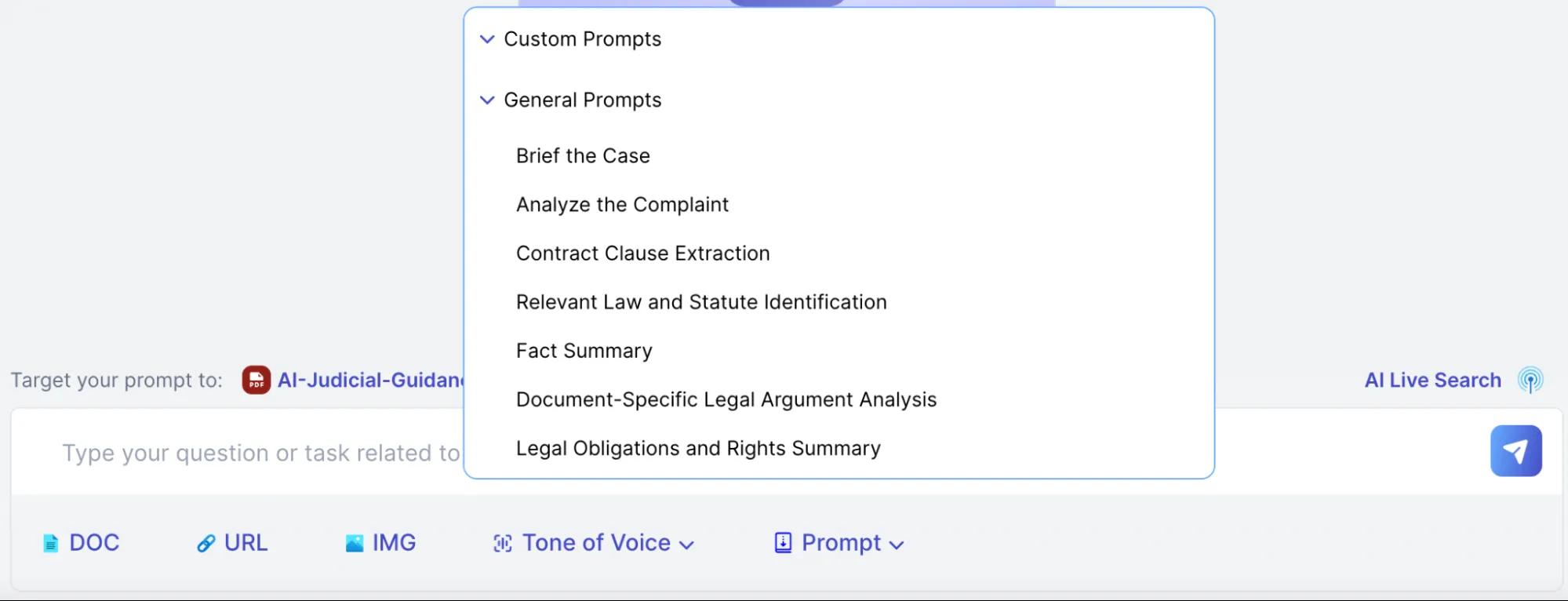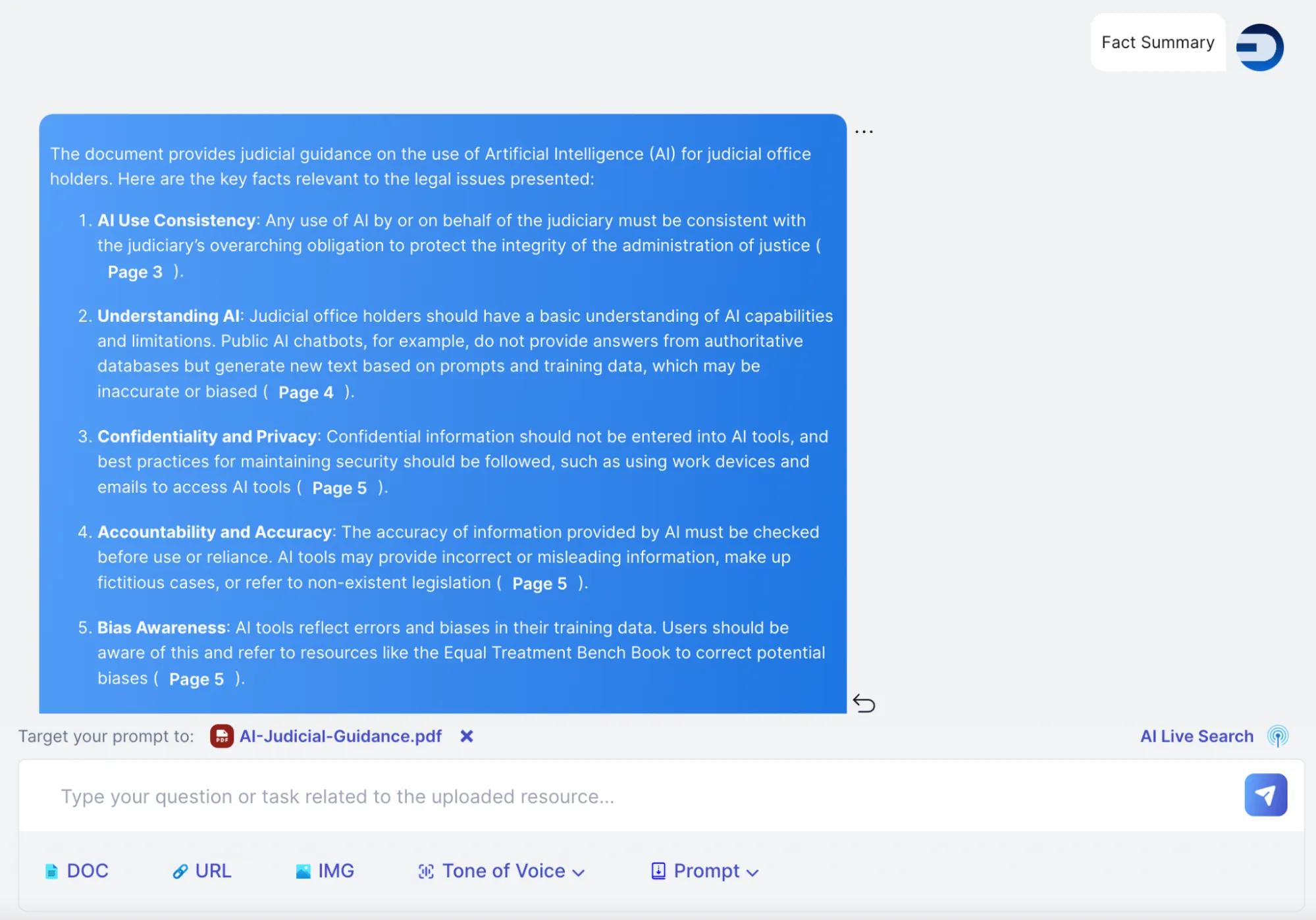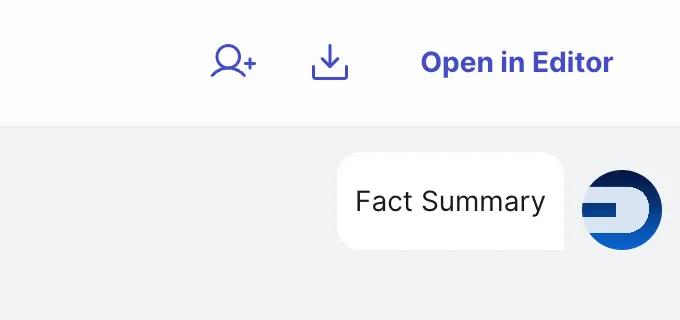Ask AI Legal Questions With DocuEase
Mastering the craft of formulating effective AI prompts is akin to having a direct line to an immensely powerful, tireless legal assistant. The right prompts can sift through volumes of legal documents, extract pertinent information, and even identify patterns and insights that might escape the human eye.The core of our endeavor is to empower lawyers with the knowledge and tools to create AI prompts that are not only effective but transformative. These prompts are the key to unlocking AI's potential, enabling legal professionals to streamline their research, enhance their document analysis, and elevate their practice to unprecedented levels of excellence.As we go into the mechanics of crafting these AI prompts, it's essential to remember that this isn't about replacing the lawyer's expertise or intuition. Instead, it's about augmenting their capabilities, ensuring they can achieve more in less time, with accuracy that defines the very essence of legal precision. How To Ask AI Better Questions
The effectiveness of AI for legal analysis hinges on the ability to craft precise and purposeful prompts. We understand the critical role these prompts play and are dedicated to equipping lawyers with the skills needed to harness the full potential of AI. Here’s how you can master the art of crafting effective AI prompts for legal analysis.What Is An AI Prompt?
An AI prompt is essentially a question or command that directs the AI's analysis of legal documents. Think of it as providing instructions to a highly skilled assistant; the clarity and specificity of your instructions directly impact the output you receive. Effective prompts go beyond mere keywords; they encapsulate the context, the specific information needed, and the desired format of the response.Components of a Good AI Question for Legal Professionals
Remember that the power of this technology is not just in its algorithms, but in how we communicate with it.Clarity
The prompt should clearly articulate what you are looking for. Ambiguity can lead to irrelevant or broad responses, which dilute the efficiency AI is meant to bring.Specificity
Tailor your prompts to be as specific as possible. For instance, instead of asking for "contract anomalies," specify "identify clauses related to intellectual property rights that deviate from standard industry practices."Contextual Relevance
Providing context helps AI understand the frame of reference. For legal documents, this might include specifying the jurisdiction, the area of law, or any precedents that should be considered.Strategies for Creating Effective AI Prompts
Legal professionals can craft AI prompts that streamline their workflow and enhance the quality and relevance of the insights gained from AI-powered document analysis. Our goal is to ensure that lawyers can leverage AI not just as a tool, but as a strategic asset in their legal practices. Tailoring Prompts for Targeted Analysis
Before crafting your prompt, clearly define what specific outcome you're aiming for. Is it to uncover potential legal issues within a contract? Or to extract pertinent case laws related to a particular legal matter? Your objective should dictate the structure of your promptContext is king in legal analysis. Specify the context surrounding your query—be it related to a certain jurisdiction, a specific field of law (e.g., intellectual property, corporate law), or a particular type of legal document (e.g., lease agreements, NDAs). For instance, "Identify clauses that may pose a risk of non-compliance with the GDPR in the provided data processing agreements."Using Legal Jargon Effectively
Incorporate specific legal terms relevant to your analysis to guide the AI more effectively. However, ensure these terms are used accurately to prevent any misinterpretation by the AI.While specialized legal language is important, avoid overly obscure or archaic terms that might not be well-represented in the AI's training data.Incorporating Context and Desired Outcome
Providing a brief overview of the legal scenario can greatly enhance the AI's ability to tailor its analysis. For instance, mentioning that you're dealing with a breach of contract case in the construction industry can focus the AI's search and analysis efforts.If you're looking for information that can be directly cited in legal briefs or memos, state this requirement. This could involve asking for information to be formatted in a way that highlights key findings, provides direct quotes from legislation, or even suggests potential legal arguments based on the analysis.Problems You Can Ask AI To Solve
Here, we present several scenarios demonstrating how to ask AI to solve legal tasks, tailored to the unique needs of lawyers.Summarizing Documents For Clients
The attorney receives a large volume of documents related to a case. These must be sorted chronologically, analyzed for pertinent information, summarized on an index or chronology, addressed in correspondence to the client with an explanation of the impact on the case.Current Workflow:
- Documents are forwarded to a paralegal for sorting into chronological order.
- The paralegal prepares a summary of the documents.
- The summary is reviewed by the attorney.
- The attorney dictates a letter to the client based on the summary.
- The dictation is sent to a legal assistant for typing.
- The draft letter is returned to the attorney for review, editing, and finalization.
- The finalized letter is sent to the client.
Typically, this process may require 6-10 hours of combined attorney and paralegal time.DocuEase Workflow:
- The attorney uploads the documents to DocuEase.
- DocuEase sorts and organizes the documents into chronological order.
- DocuEase proprietary algorithms analyze the content of the documents, identifying key information and areas of interest specified by the attorney.
- DocuEase generates a comprehensive summary of the documents, highlighting important details and providing page citations with hyperlinks for verification.
- Based on the attorney's preferences and tone, DocuEase drafts a letter to the client, incorporating the summarized information.
- The attorney reviews and edits the drafted letter using the DocuEase AI Editor.
- The finalized letter is ready to be sent directly to the client.
With DocuEase integration, the entire process now takes only 5-10 minutes to complete.Benefits:
- Time Efficiency: Eliminates the need for manual sorting and summarization, allowing attorneys to focus on higher-value tasks.
- Accuracy: DocuEase algorithms ensure consistent and accurate document analysis and summarization.
- Cost Savings: Reduces reliance on paralegals and legal assistants for repetitive tasks, optimizing resource allocation.
- Enhanced Client Communication: DocuEase-generated letters maintain the attorney's tone and style, facilitating clear and professional client communication.
- Streamlined Workflow: DocuEase streamlines the entire document review and communication process, reducing turnaround time.
Other Potential Uses:
- DocuEase can translate documents and communications into different languages, making it easier for law firms to handle international cases.
- DocuEase can summarize content from web pages or online documents, providing attorneys with quick insights without the need to read through entire websites.
- Legal Drafting Assistant: DocuEase can assist attorneys in drafting complex legal documents by analyzing draft agreements and suggesting contract provisions.
Hearing and Trial Prep
The night before hearing, the trial lawyer receives an email from opposing counsel’s paralegal containing 10-15 court opinions that will be argued the following morning. This is a pivotal issue in the case, and the lawyer can’t afford to be unprepared to argue the nuances of each of these opinions.Current Workflow:
- The lawyer accesses a costly online legal research engine to pull each opinion individually.
- Each court opinion is carefully read and analyzed to assess its relevance to the case.
- The lawyer looks for distinguishing factors and potential arguments to rebut opposing counsel's claims.
- A brief legal memo addressing each court opinion is drafted.
- Time-consuming late-night work ensues. Date night is canceled.
Typically, this process may require 3-4 hours of attorney time.DocuEase Workflow:
- The trial lawyer uploads the court opinions to DocuEase.
- Proprietary algorithms swiftly analyze each opinion, generating briefs in IRAC (Issue, Rule, Application, Conclusion) format.
- The briefs include summaries of any concurring and dissenting opinions, as well as a comprehensive list of authorities cited in each opinion.
- Using DocuEase AI capabilities, the lawyer queries the opinions to identify potential distinctions relevant to the case's facts.
- DocuEase prepares bench briefs, incorporating legal arguments and citations from the analyzed opinions, complete with page citations with hyperlinks to the source material for easy verification.
- With minimal effort and time, the lawyer is equipped with well-prepared rebuttals and legal arguments ready for the upcoming court hearing.
- Date night is saved!
With DocuEase integration, the entire process now takes only 15-20 minutes to complete.Benefits:
- Time Efficiency: Eliminates the need for comprehensive review and analysis of multiple court opinions, saving significant time and effort.
- Cost Savings: Reduces reliance on expensive legal research engines, optimizing resource allocation.
- Enhanced Preparation: DocuEase briefs provide comprehensive summaries and citations, enhancing the lawyer's understanding and preparedness.
- Ensuring Accuracy: Specific page citations with hyperlinks to source materials ensures the information is accurate and reliable.
- Confidence in Rebuttal: Well-prepared bench briefs equip the lawyer with robust legal arguments, fostering confidence in addressing opposing counsel's arguments during court hearings.
Legal Review & Drafting
An experienced attorney specializing in venture capital transactions faces tight deadlines and immense pressure as they review a complex Series A investment agreement for a high-growth tech startup. Tasked with ensuring the agreement aligns with the venture capital firm's objectives and mitigates risks, the attorney navigates through intricate legal provisions covering equity financing terms, investor rights, governance structures, and exit strategies. Their meticulous review is essential to safeguarding the firm's interests amidst the complexities of the investment, facilitating the startup's growth and success in the competitive tech industry.Current Workflow:
- The attorney receives a set of legal documents related to the due diligence and investment agreement.
- Each document is carefully reviewed, and key provisions are identified based on the attorney's expertise and client's requirements.
- The attorney manually drafts or revises provisions, ensuring compliance with applicable laws and regulations.
- Extensive research may be required to validate language and ensure accuracy.
- The drafting process is time-consuming and may involve multiple iterations to achieve the desired outcome.
Typically, this process may require 15-30 hours of attorney time.DocuEase Workflow:
- The attorney uploads the legal documents to DocuEase, specifying the desired provisions to be analyzed and drafted.
- Proprietary algorithms analyze the documents, identifying relevant clauses and provisions based on predetermined criteria and legal principles.
- DocuEase generates a comprehensive analysis report, highlighting key provisions, potential risks, and suggested revisions.
- Using natural language processing (NLP) capabilities, DocuEase drafts or suggests revisions to the identified provisions, incorporating legal language and best practices.
- The attorney reviews the drafts within the DocuEase AI Editor, making any necessary adjustments or additions based on their expertise and client's specific needs.
- DocuEase provides real-time collaboration features, allowing attorneys to collaborate with colleagues or clients in refining the drafted provisions.
- Upon finalization, the attorney exports the revised documents from DocuEase in various formats, ready for further review or execution.
With DocuEase integration, the entire process now takes only 1-2 hours to complete.Benefits:
- Time Efficiency: Streamlines the document analysis and drafting process, reducing the time and effort required by attorneys.
- Accuracy and Consistency: DocuEase algorithms ensure consistent analysis and drafting of key provisions, minimizing errors and discrepancies.
- Compliance and Risk Management: Helps attorneys identify potential legal risks and ensure compliance with relevant laws and regulations.
- Enhanced Collaboration: Facilitates collaboration among attorneys, colleagues, and clients, fostering greater transparency and communication.
- Scalability: Enables attorneys to handle a higher volume of legal documents and transactions efficiently, without sacrificing quality.
How to Ask AI Questions Using DocuEase
Asking questions using DocuEase's AI tools is a straightforward process designed to be as simple as possible. Here's a step-by-step guide:1. Access the Platform: Open your preferred web browser and navigate to the DocuEase website.2. Log In or Sign Up: If you already have an account, log in. If not, you'll need to sign up, which is a quick and simple process.3. After completing the registration process, you will be directed to your First Task where you will be able to upload a document for analysis with the "Upload Your First Document" button or explore more options with the "Choose How to Get Started" button.4. After you have uploaded your document, you can create a Concise Summary by clicking on this button. Please note that you have the option to specify the page range you would like summarized.5. Next you can type your question in the text box provided. No need for complicated query languages - you can just ask as if you're talking to a human! We also provide the option to ask the AI directly or even to search Google for answers to questions instead of directing your questions to your uploaded resource directly.6. If you’re having trouble thinking of what questions to ask the AI, you can make use of the Prompt Library. It provides a collection of pre-defined prompts that you can choose from to enhance your workflow.7. The AI will display the answer, along with any relevant data or graphs, on the screen.8. If the answer isn't what you were looking for, try reframing your question and asking again. Send us a note if you’re having any troubles!9. If you wish to keep a record of the query and the answer, you have the option to open it in DocuEase’s AI editor (button in the top right corner), and download as a PDF.Tired of spending hours working on document review, legal contract summarization, due diligence, and other routine tasks?
Discover how lawyers like you are using our AI platform.


